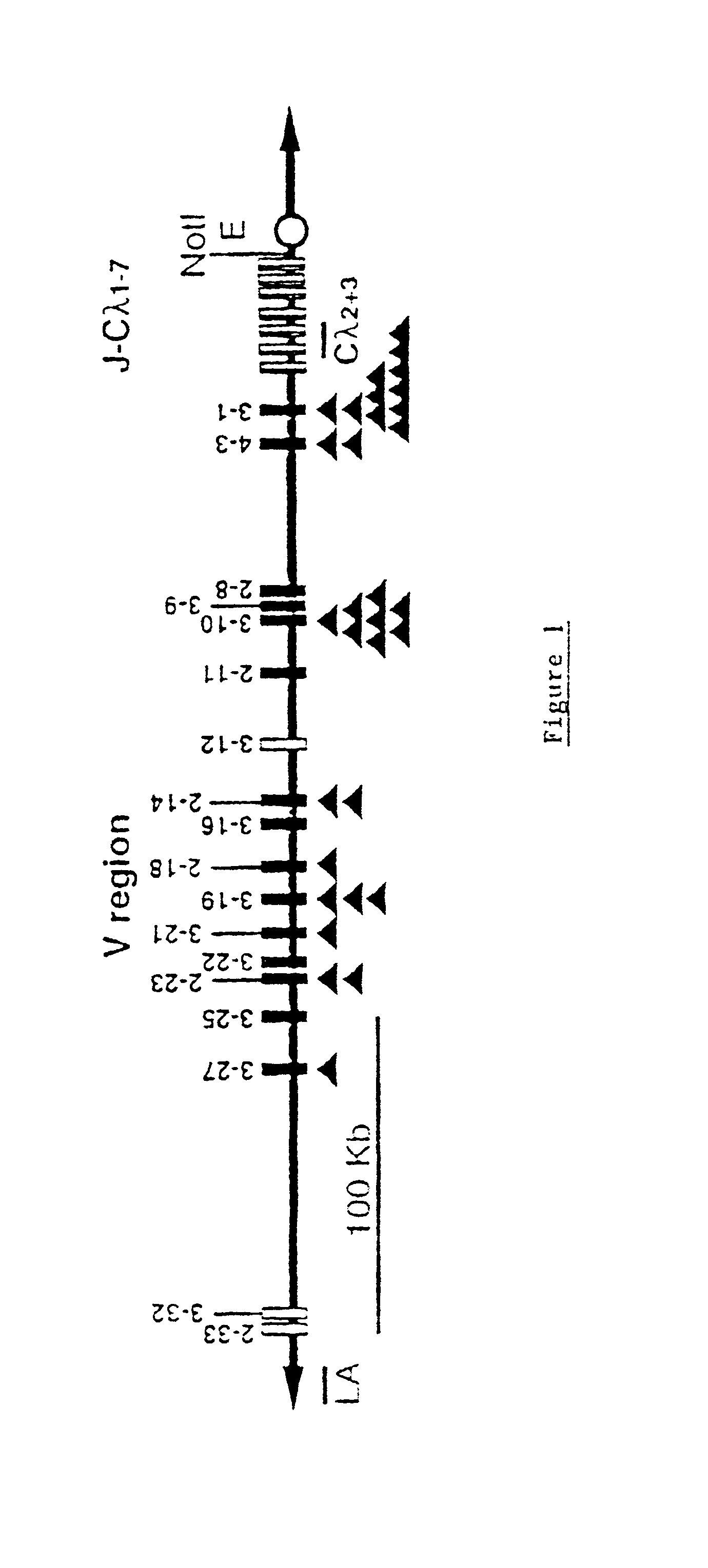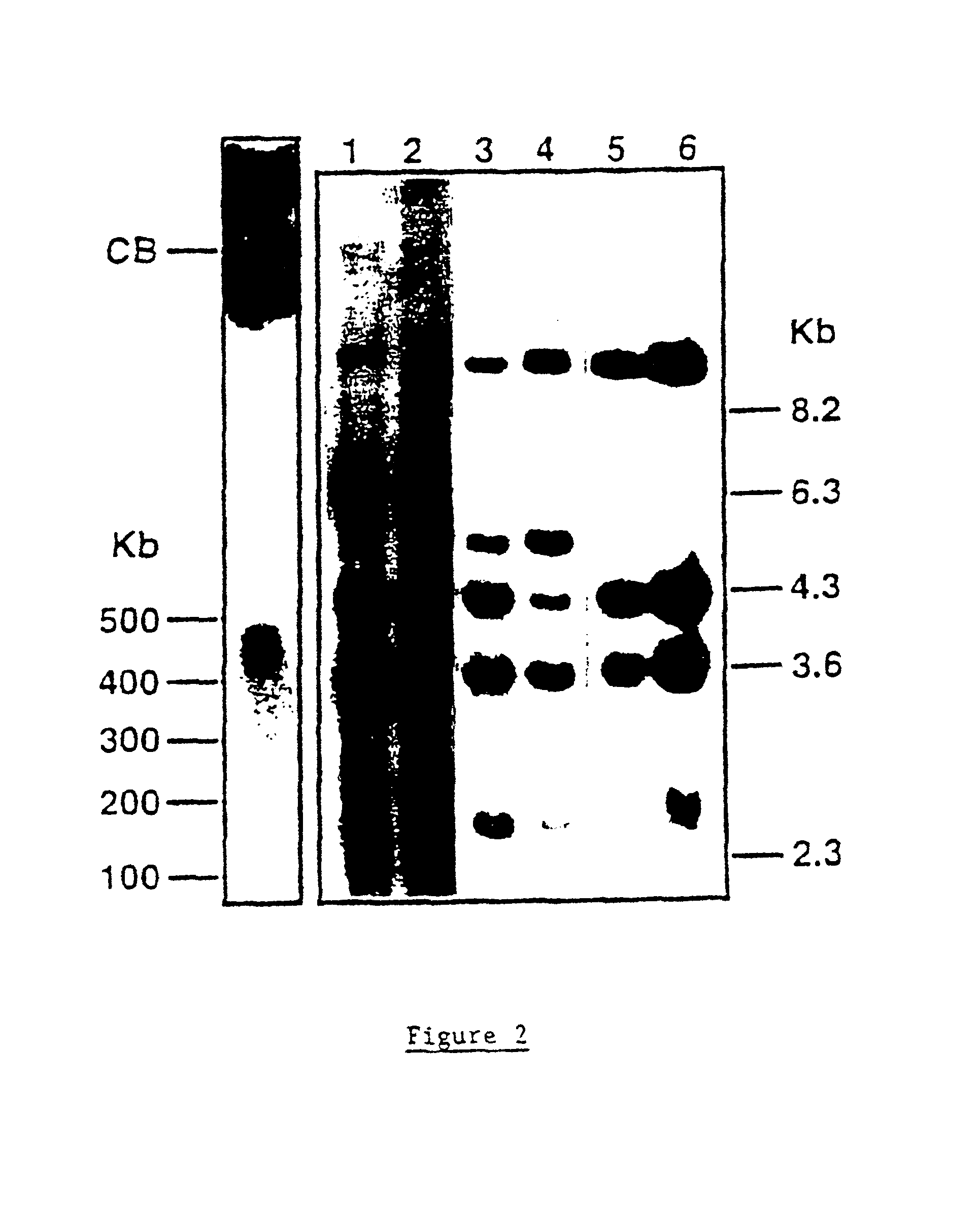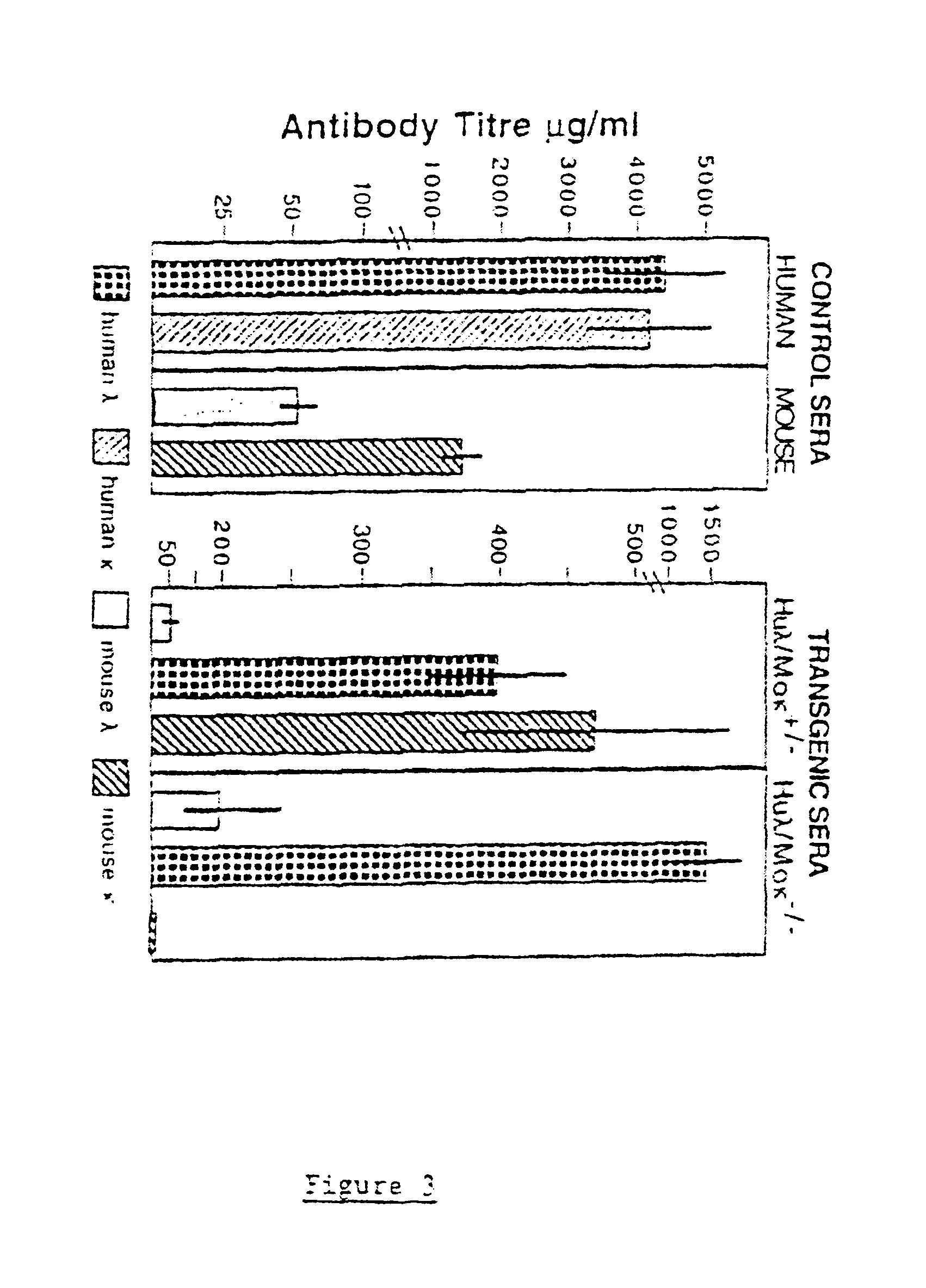Murine expression of a human IgA lambda locus
a technology of iga lambda and iga, which is applied in the field of murine expression of iga lambda locus, can solve the problems of not fully understanding the process of activating light chain locus rearrangement, and not knowing whether -transgenic mice would be suitable for human antibody production, and achieves high expression
- Summary
- Abstract
- Description
- Claims
- Application Information
AI Technical Summary
Benefits of technology
Problems solved by technology
Method used
Image
Examples
example i
Production Methodologies
The HuIgλYAC, Introduction Into ES Cells and Derivation of Transgenic Mice.
[0036]The 410 Kb HuIgλYAC, accommodating a 380 Kb region (Vλ-JCλ) of the human λ light chain locus with V, J and C genes in germline configuration, was constructed as described (29). To allow selection, 2 copies of the neomycin resistance gene (NEOr) were site-specifically integrated into the ampicillin gene on the left (centromeric) YAC arm. YAC-containing yeast cells were fused with HM-1 ES cells, a kind gift from D. Melton, as described (30) and G418 resistant colonies were picked and analyzed 2-3 weeks after protoplast fusion. ES cells containing a complete HuIgλYAC copy, confirmed by Southern hybridization, were used for blastocyst injection to produce chimeric animals (31). Breeding of chimeric animals with Balb / c mice resulted in germiline transmission. Further breeding with κ− / − mice (32) established the lines for analysis.
Southern Blot Analysis.
[0037]Either conventional DNA wa...
example 2
Characterization of the Transgenic Mice, Production Methodologies and Produced Antibodies
[0050]The transgenic human Igλ locus. The human Igλ translocus (FIG. 1) was assembled on a YAC by recombining 1 YAC containing about half of all Vλ gene segments with 3 overlapping cosmids containing Vλ and Jλ-Cλ gene segments and the 3′ enhancer (29). This resulted in a 410 Kb YAC accommodating a 380 Kb region of the human λ light chain locus with 15 Vλ genes regarded as functional, 3 Vλs with open reading frames but not found to be expressed and 13 Vλ pseudogenes (40). This HuIgλYAC was introduced into ES cells by protoplast fusion (30) and chimeric mice were produced by blastocyst injection (31). The ES cell clone used for this showed a 450 Kb NotI fragment corresponding to HuIgλYAC, as identified by PFGE and Southern hybridization with the 3′ probe, Cλ2+3, and the 5′ probe, LA comprising LYS2, present in the left centromeric YAC arm (not shown). Germline transmission was obtained, and PFGE a...
PUM
| Property | Measurement | Unit |
|---|---|---|
| pH | aaaaa | aaaaa |
| pH | aaaaa | aaaaa |
| pH | aaaaa | aaaaa |
Abstract
Description
Claims
Application Information
 Login to View More
Login to View More - R&D
- Intellectual Property
- Life Sciences
- Materials
- Tech Scout
- Unparalleled Data Quality
- Higher Quality Content
- 60% Fewer Hallucinations
Browse by: Latest US Patents, China's latest patents, Technical Efficacy Thesaurus, Application Domain, Technology Topic, Popular Technical Reports.
© 2025 PatSnap. All rights reserved.Legal|Privacy policy|Modern Slavery Act Transparency Statement|Sitemap|About US| Contact US: help@patsnap.com



